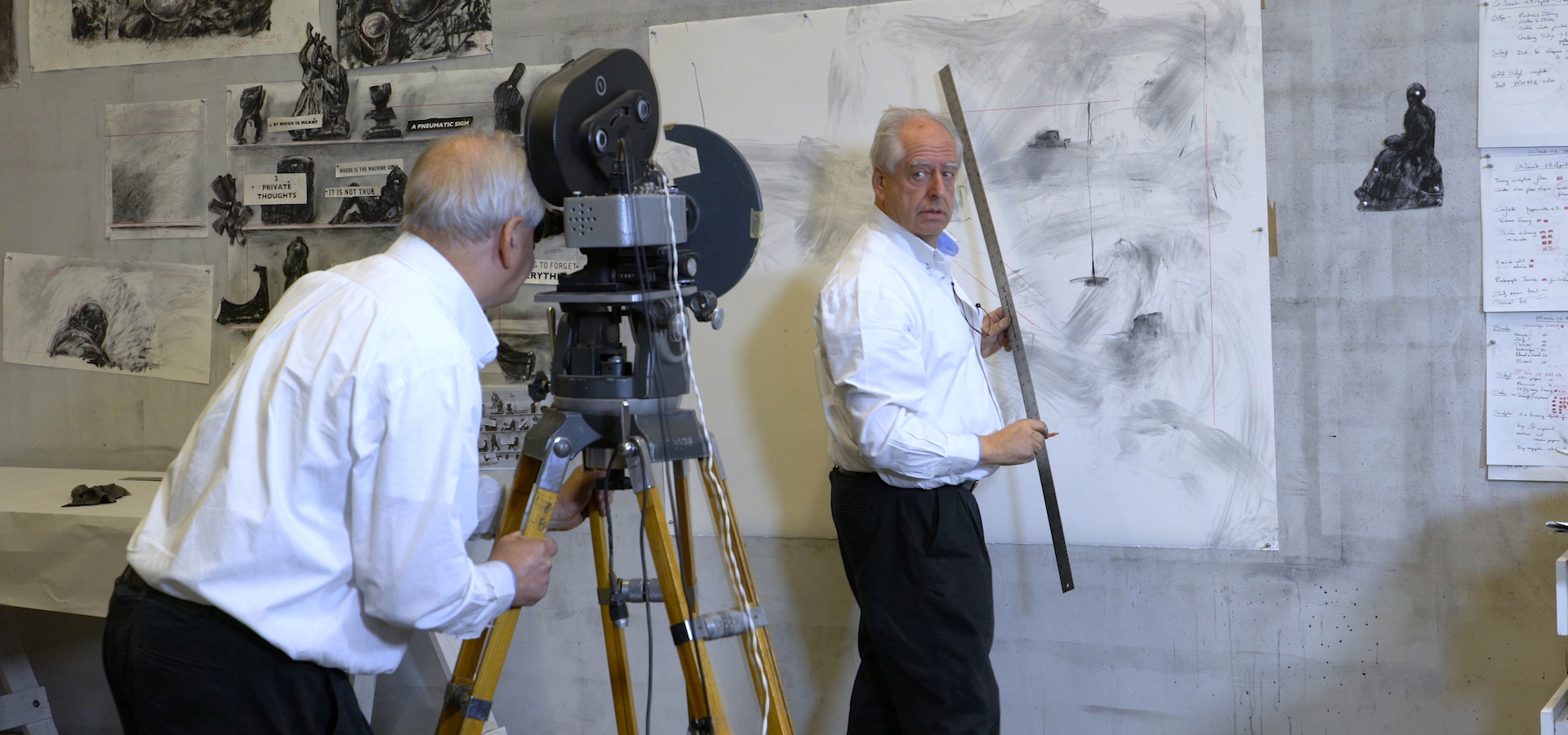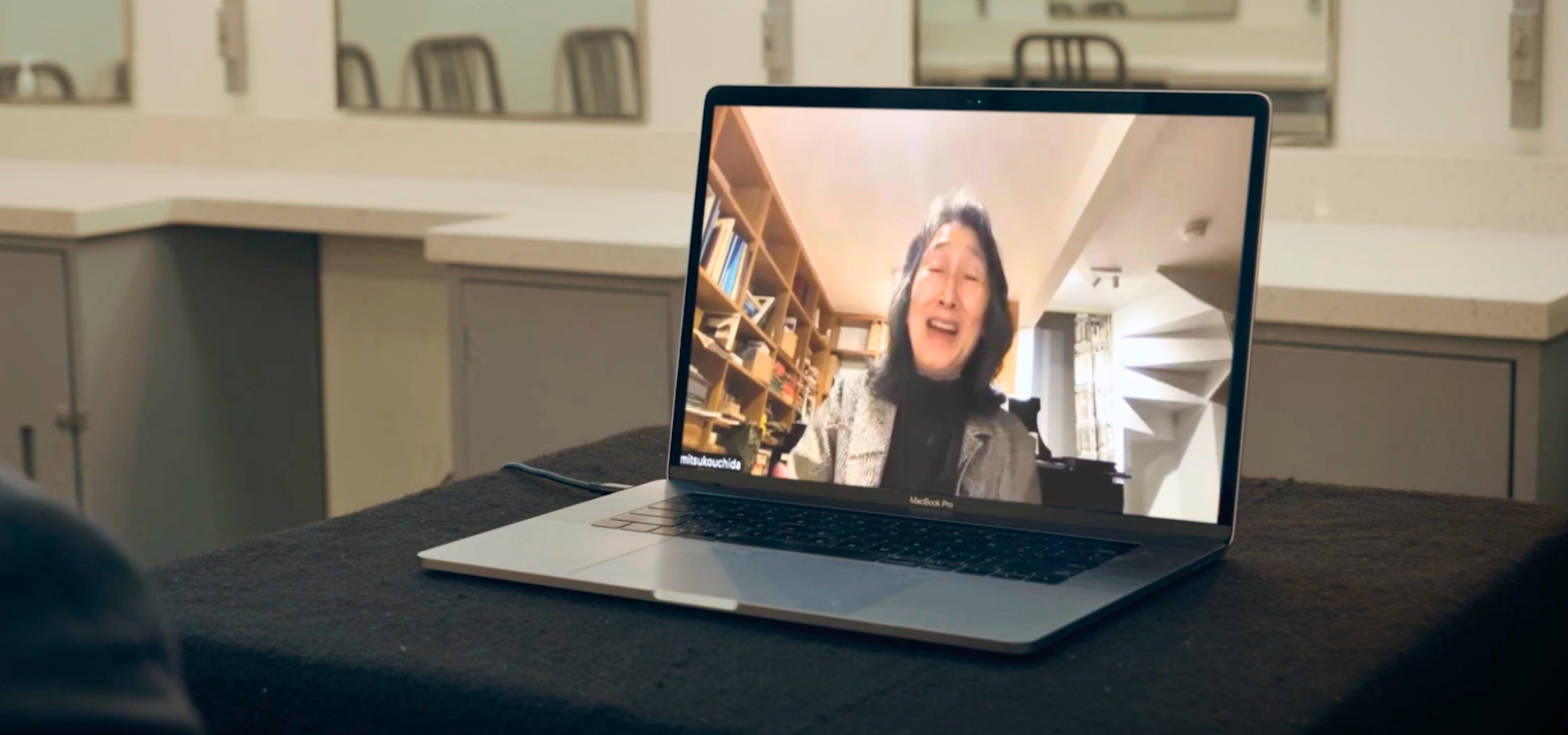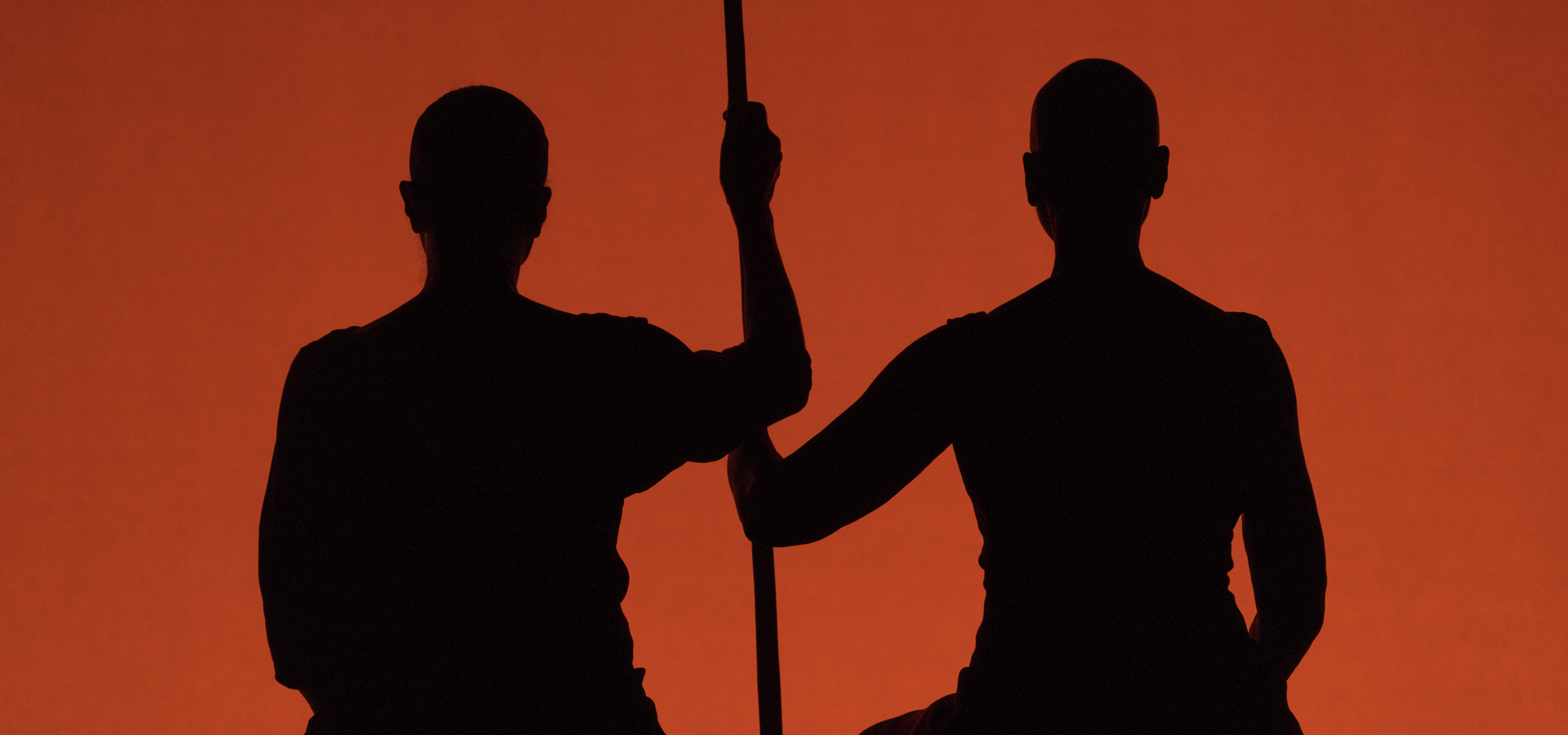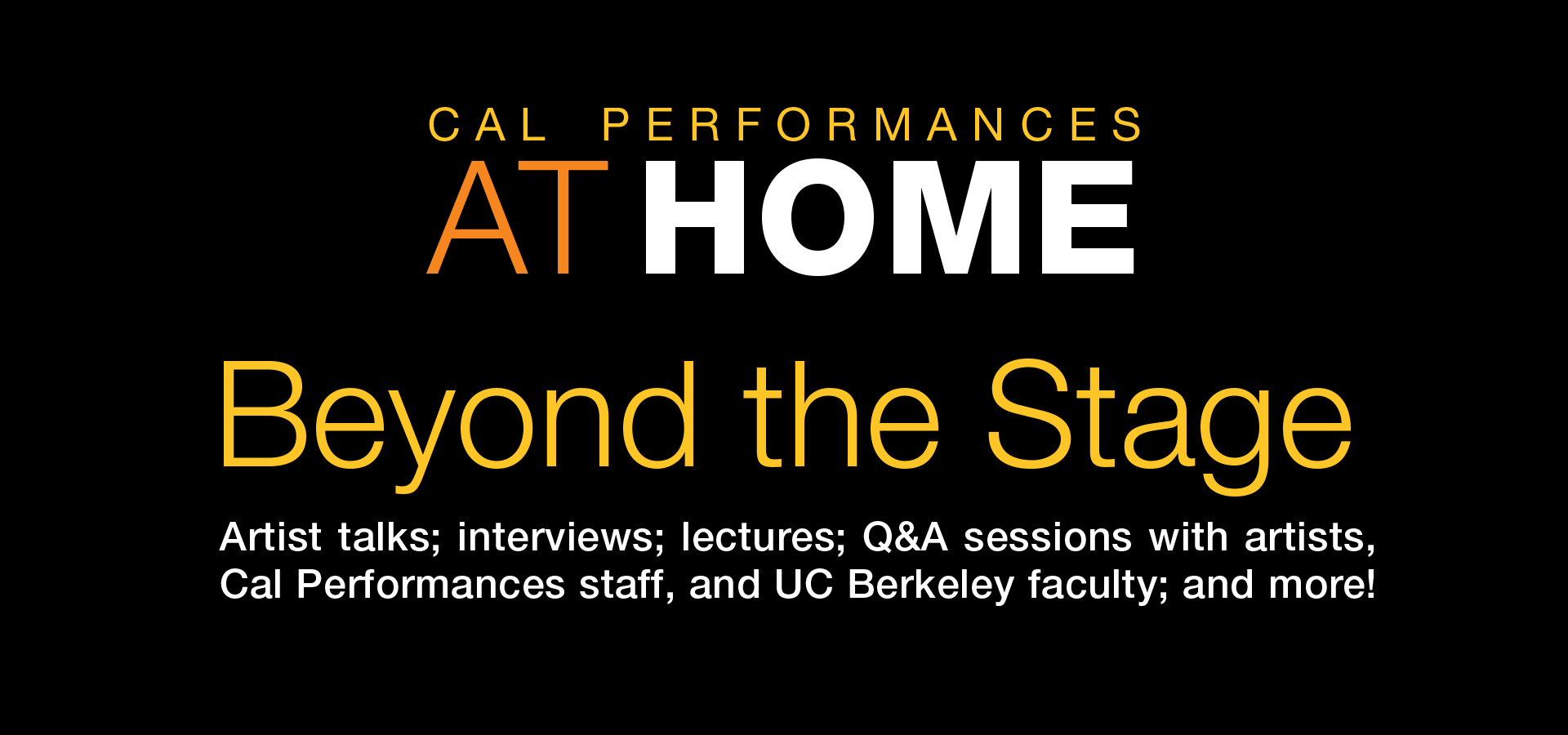
Cal Performances at Home is much more than a series of great streamed performances. Fascinating behind-the-scenes artist interviews. Informative and entertaining public forums. The Cal Performances Reading Room, featuring books with interesting connections to our Fall 2020 programs. For all this and much more, keep checking this page for frequent updates and to journey far, far Beyond the Stage!
Major support for Beyond the Stage is provided by Bank of America.
Beyond the Stage
Queer Luminaries from World History You’ll Want to Know
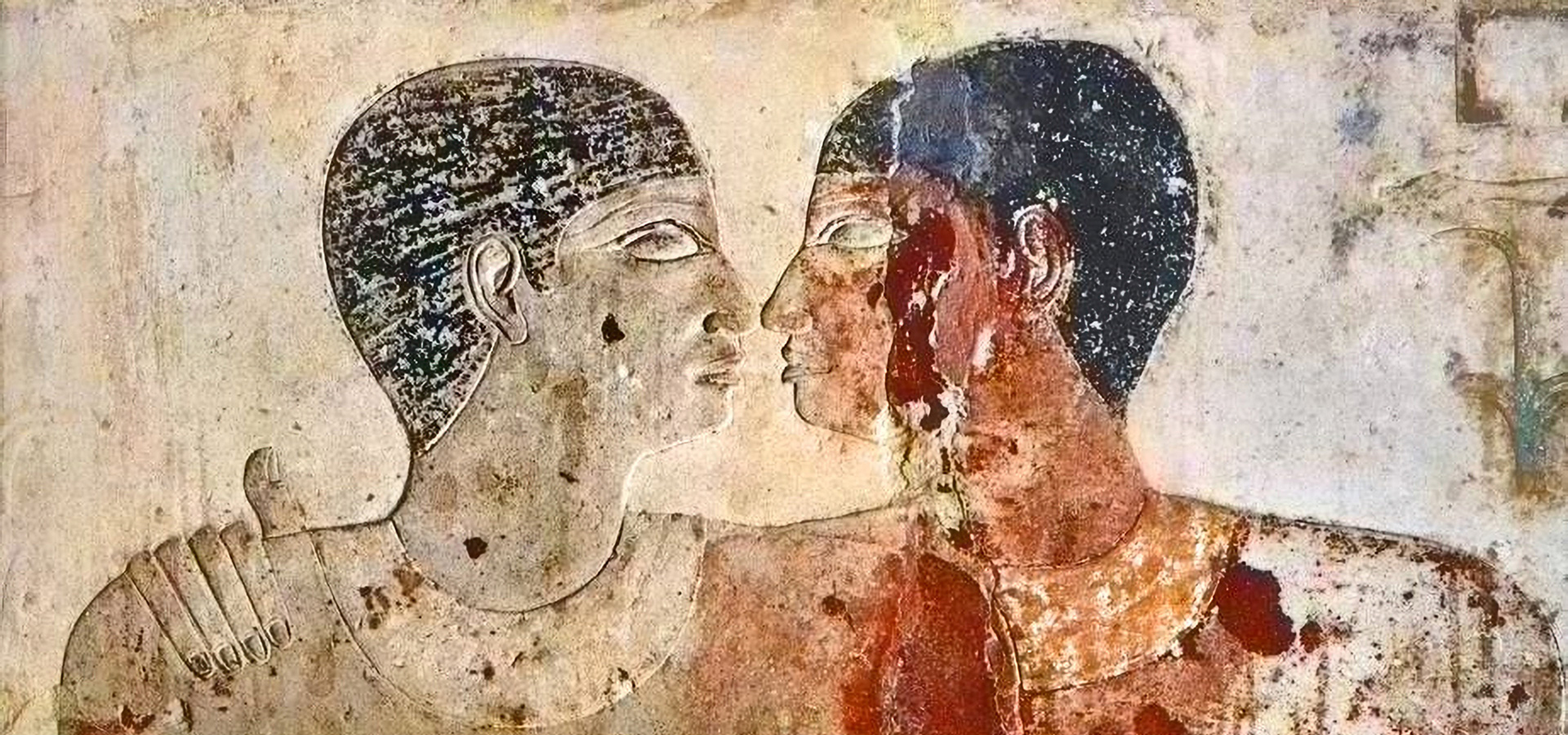
Queer Luminaries from World History You’ll Want to Know
Celebrating LGBTQ+ Roots in Honor of Stonewall’s 54th Anniversary.
By Krista Thomas, Cal Performances’ Associate Director of Communications
June 28 represents the anniversary of the 1969 riots at Stonewall, which sparked the 20th century LGBTQ+ liberation movement. Stonewall’s anniversary and Pride month are not only an invitation to celebrate the queer community around us today, but also to reflect on those who fought for rights and representation before us. This coming season, Cal Performances is fortunate to feature the West Coast premiere of Taylor Mac & Matt Ray’s Bark of Millions, which celebrates and explores the spectrum of the queer community through the lens of such forebears. In the words of Taylor Mac, “[The production is] 55 songs, one song for every year after Stonewall, inspired by a different queer person from world history. They’re all people that I never would have known about my entire upbringing. And it’s an exploration of the ideas that these people inspire.”
In honor of Stonewall’s anniversary, we’re highlighting a few underrecognized queer figures in history who have made an impact on the LGBTQ+ community—and who’ve inspired Bark of Millions. On behalf of Cal Performances, we’d like to thank the creators of Bark of Millions for shedding light on these individuals.
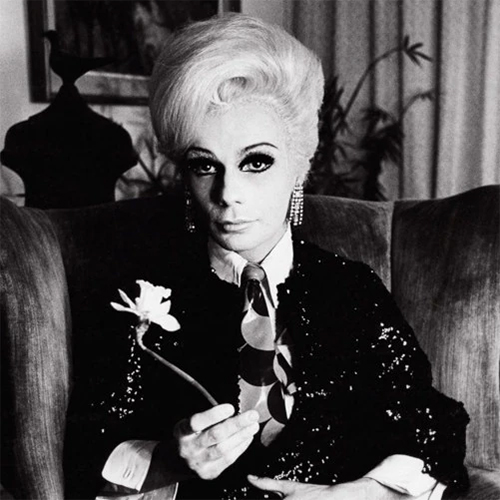
Mother Flawless Sabrina (1939–2017)
Performer, drag pioneer, queer advocate, and self-proclaimed “gender clown,” Flawless Sabrina was one of the main figures who brought greater visibility to drag beginning in the 1960s. Born in Philadelphia in 1939, Jack Doroshow (the man behind the drag) attended his first drag show in Manhattan in the late 1950s, and shortly thereafter was inspired to stage a drag pageant alongside friends in 1959. Though Doroshow ran the first events in a suit, he and his co-hosts decided it was only fitting that they dress for the occasion and, by pageant number three, his drag persona Flawless Sabrina was born. To signal to competing queens that she was not a competitor, Flawless Sabrina adopted the title of Mother, which would turn out to perfectly express her support and mentorship of other queens. Despite beginning her career at a time when drag had not yet hit the “mainstream”—and crossdressing was still criminalized—she was able to find commercial success over time in her Miss All-America Camp Beauty Pageant, which went on to host competitions at a national scale.
In the late 1960s, Mother Flawless Sabrina retired from hosting pageants and turned her attention to film, starring in her own iconic documentary, The Queen, and even consulting on drag and queer representation for a handful of Hollywood films. Later in life, she acted as a cultural producer and arts socialite, and continued her work of mentoring and advocating for queer youth. She is particularly recognized for her advocacy for trans folks, in society at large as well as within the gay community.

Chavela Vargas (1919–2012)
Chavela Vargas, beloved Mexican Ranchera singer, was an icon of rebellion and queer expression. Born in Costa Rica, Vargas moved to Mexico as a teenager to find greater opportunities as a singer and began her career performing on the streets and in clubs in Mexico City. In addition to her sultry voice and beautifully raw interpretation of Ranchera music, Vargas was known for her rebellious image. Contrary to gendered expectations, she wore masculine clothing, smoked cigars, drank heavily, and even carried a gun. She also frequently addressed love interests in her music as women and was known to have had many love interests of her own, including a rumored romance with Frida Kahlo. At age 81, the international musical icon publicly described herself as a lesbian. In a 2000 interview, Vargas said, “Nobody taught me to be like this. I was born this way. Since I opened my eyes to the world, I have never slept with a man. Never. Just imagine what purity. I have nothing to be ashamed of.” At her passing in 2012, Vargas was lauded for paving the way for free expression and representation within her field.
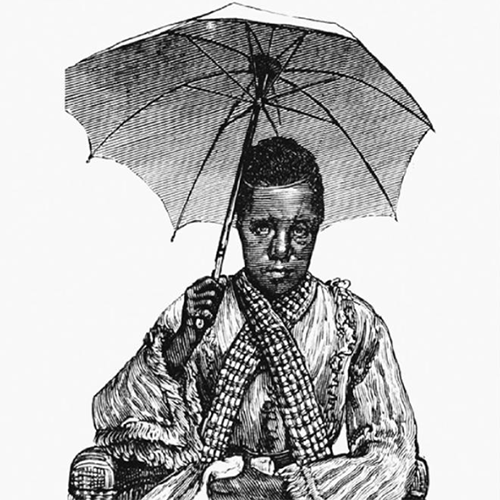
Frances Thompson (1840–1876)
Frances Thompson is believed to be the first trans woman to testify before the US Congress. Thompson was born into slavery in the South in 1840 and, following the Civil War, was granted freedom in her mid-20s. After her emancipation, she was living as her authentic self wearing bright dresses, shaving her face, and taking in washing to earn a living.
In 1866, Thompson was raped during the Memphis Riot, in which white men targeted the Black community in Memphis over the course of three days of atrocious violence that left nearly 50 people dead, nearly 100 buildings destroyed, and an entire community damaged and vulnerable. Thompson was among a handful of Black women who were called on to testify to the crimes before Congress. As a result of her brave testimony, Thompson had greater recognition in the South and was subject to increased harassment. Ten years after the trial, Thompson was arrested for cross-dressing and imprisoned. Her arrest and identity as a trans woman were used politically to discredit her previous “lynchpin” testimony. Though persecuted during her time, Thompson is often referenced now as an example of how the history of queer liberation and Black liberation are inextricably linked.

Niankhkhnum & Khnumhotep (25th century BC)
Niankhkhnum and Khnumhotep were believed to be chief manicurists to a ruler of Egypt in the fifth dynasty. When their tomb was discovered in 1964 in Cairo, the two men drew significant attention due to how intimately they were depicted together in carvings on the wall of their tomb: In one very powerful reference, the two are seen facing each other, holding hands, and touching noses, which was considered the greatest sign of intimacy at that time and was typically reserved for husband and wife. Other depictions showed one of the men in positions traditionally reserved for women in such carvings and, while the two did have wives and children who were present in the artwork, they were hardly featured in the core of the carvings. While some scholars have suggested that the two men may have been given a joint burial and connected depiction because they were twins (or even conjoined twins!), a leading theory remains that the two were lovers and that their tomb represents the first recorded same-sex couple.
If you’re interested in learning even more about queer history and music this month, we recommend watching Taylor Mac, Matt Ray, Machine Dazzle, and other Bark of Millions collaborators chart centuries of popular music through a queer lens in Taylor Mac’s 24-Decade History of Popular Music, which will be released for streaming on June 27.
Related Posts
There are no related posts yet. Check back soon!
San Francisco Gay Men’s Chorus: Pioneers of a Queer Choral Movement
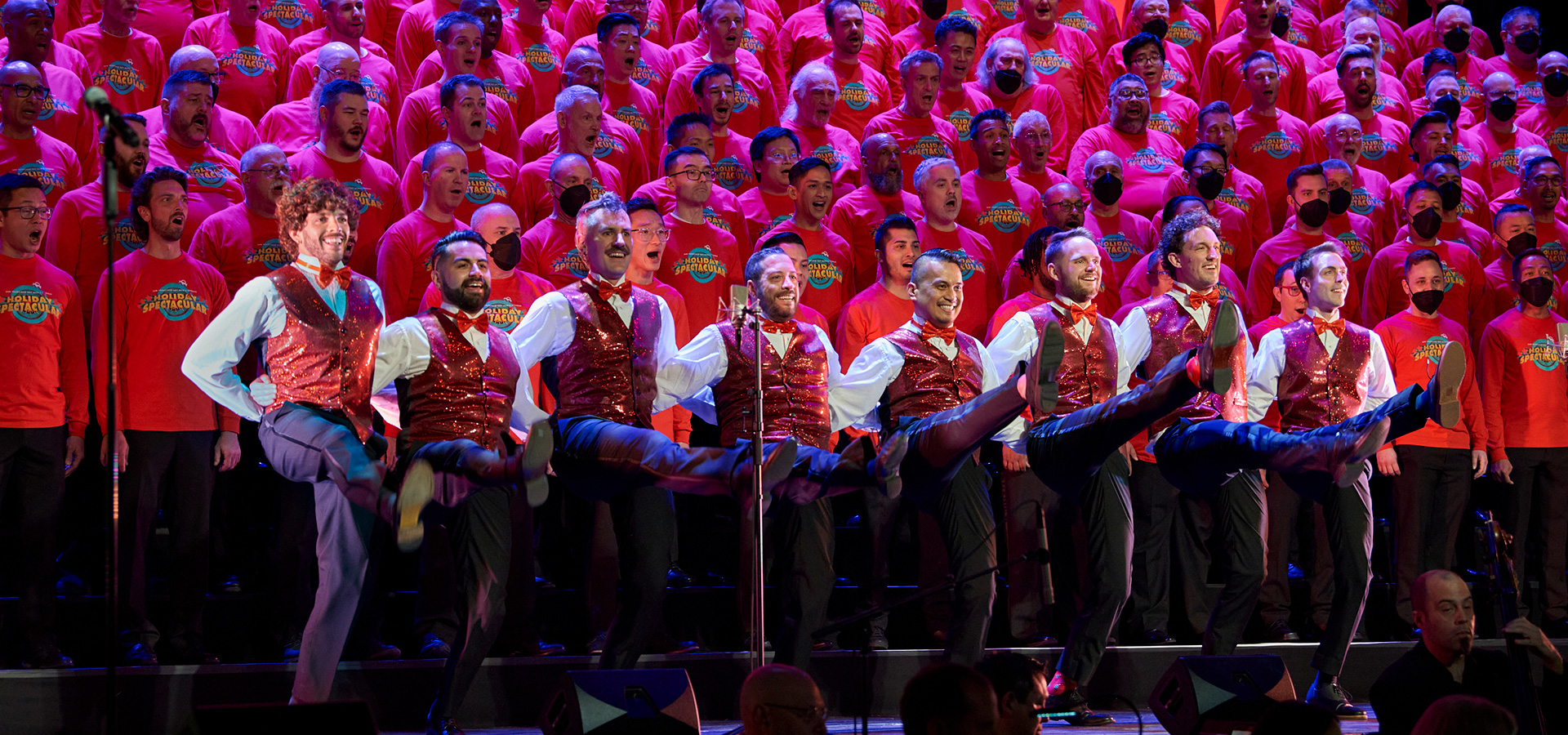
San Francisco Gay Men’s Chorus: Pioneers of a Queer Choral Movement
A voice for change.
By Krista Thomas, Cal Performances’ Associate Director of Communications
The San Francisco Gay Men’s Chorus (SFGMC), who performs with us this December, has been a powerful voice of change since its founding 45 years ago. Created by Jon Reed Sims who recruited members by way of flyering the city’s telephone poles, the group was organized with the simple goal of providing more music for the local Gay Freedom Day Parade. However, less than a month after their first practice, the chorus of already more than 100 singers was pulled toward a more serious subject.
November 27, 1978, the night of the group’s fifth ever rehearsal, marked the assassinations of Supervisor Harvey Milk, the first openly gay elected official in California, and San Francisco Mayor George Moscone. Moved by the city’s sense of loss, over 100 members of the chorus followed the candlelight vigil march onto the steps of SF City Hall and, in an emotional moment, spontaneously began singing. Just like that, the choir made their first public appearance—one rooted not just in the idea of a celebration of identity, but committed to the true work of the community, of calling for justice and working for solidarity.
Following this performance, they held their first formal concert in December. The group credits a significant portion of their publicity and resulting sold-out shows those first few years to a public standoff with the San Francisco Chronicle which, in 1979, refused to publish the cover art for their “Lovers Too” concert that featured a drawing of two men kissing. The chorus protested by blocking the entrance to the newspaper’s office and, in the end, was able to generate significant press and community support. (The Chronicle would prove to be a great ally and champion of the chorus later on!)
In 1981, SFGMC embarked on their first national tour—a costly endeavor that necessitated three SFGMC members taking out mortgages on their houses! But the investment was one that undoubtedly paid off. This landmark tour hit nine major cities across all regions of the US and is credited as the direct inspiration for many gay men’s choruses that sprung up immediately following. Lauded affectionately as the “grandfathers” of the gay choral movement, SFGMC sparked a true national (and, later, even international) trend which is still evidenced in the official histories of local groups like the Gay Men’s Chorus of Washington, DC as well as the national Gay and Lesbian Association of Choruses (GALA), which formed to help organize this plethora of new organizations.
The tour finished with a home concert in San Francisco, during which the chorus received the key to the city. And while the tour was and continues to be cause of tremendous celebration, it coincided with the very beginning of a period of great difficulty for the choir and the nation at large: The same San Francisco Chronicle issue that celebrated the group’s return also bore the headline “A Pneumonia that Strikes Gay Men.” What at this time in 1981 was positioned as a small and perplexing outbreak would, in the decades to follow, become known as the HIV/AIDS Epidemic.
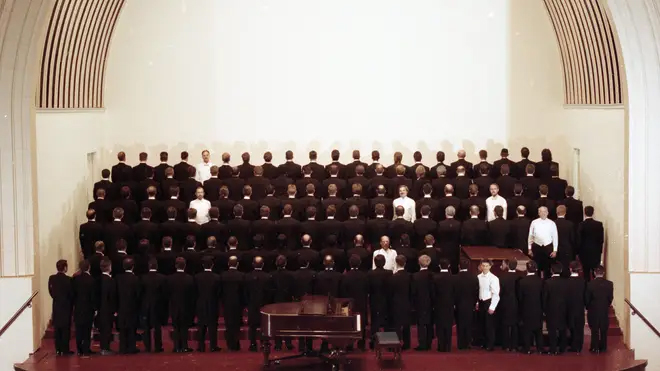
Of the 337 reported cases of HIV/AIDs in 1981, the very first year of the epidemic, nearly 40% died before the end of the year. It took years before a test was created to detect the virus and, in the meantime, the lack of information and the fear surrounding this epidemic, particularly in the gay male community, was not only physically dangerous, but mentally and socially trying as well. According to SFGMC, “As a result [of the crisis], many Americans were reluctant to interact with LGBTQ+ people because they assumed they would instantly contract HIV. Consequently, many individuals actively avoided the LGBTQ+ community altogether. In response, many LGBTQ+ individuals remained closeted.” In a time of increased isolation and loss, members of the chorus used their voices to build bridges and to retain community.
In 1987, the chorus was part of the landmark march on Washington designed to bring attention to this issue. At that time, they had lost 32 members to HIV/AIDs, including the group’s founding director in 1984. In 1993, the San Francisco Chronicle posted a sobering photo of the chorus that featured 115 of its 122 members turned around, representing the 115 members of “the fifth section” of the chorus, those they’d lost to AIDs so far. According to the Foundation for AIDS Research, the virus had killed more than 234,000 people in the US by the end of that year.
For decades, the chorus continued to advocate and fundraise for those impacted by AIDs, and even commissioned a number of moving songs to capture the tumultuous feelings of the community during this period—the first of which, “I Shall Miss Loving You,” was commissioned in 1986 and is among the first ever commission on the subject.
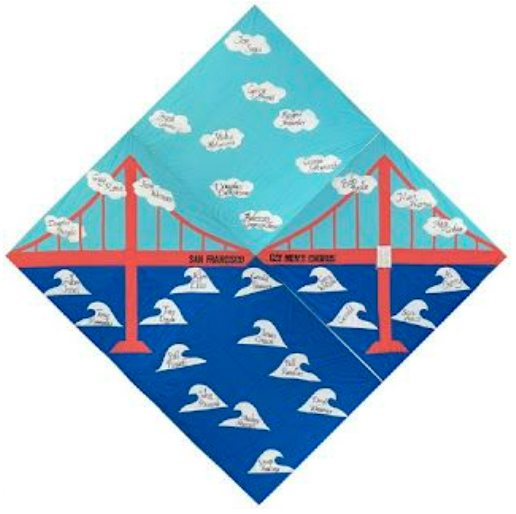
As of this year, the group has lost just over 300 members to AIDs, who have, over time, been memorialized on a special “fifth section” quilt the chorus commissioned in their honor. While AIDs detection, support, and prevention have improved dramatically in the current age, there remain over a million people living with AIDs in the US today. The chorus has continued their strong voice of activism and in 2018 established the Artists Portal Monument within the National AIDs Memorial Grove.
Though AIDs became a focus of much of their work, the group has been a voice of strength in many social justice conversations, including the fight for legalized gay marriage, in criticism of the military’s Don’t Ask Don’t Tell policy (This included a semi-staged production of the critical performance USS Metaphor in 2007.), and, most recently, as a voice for the queer community who have seen their legal protections once again challenged by politicians, particularly in the Deep South. Their 2017 tour of the Deep South with the Oakland Interfaith Gospel Choir, titled The Lavender Pen Tour, was turned into an award-winning documentary, Gay Chorus, Deep South, released in 2019. The film documents the opposition the group faced, particularly from local religious communities, and how the 300+ singers used their voice to “[bring] a message of music, love and acceptance, to communities and individuals confronting intolerance.”
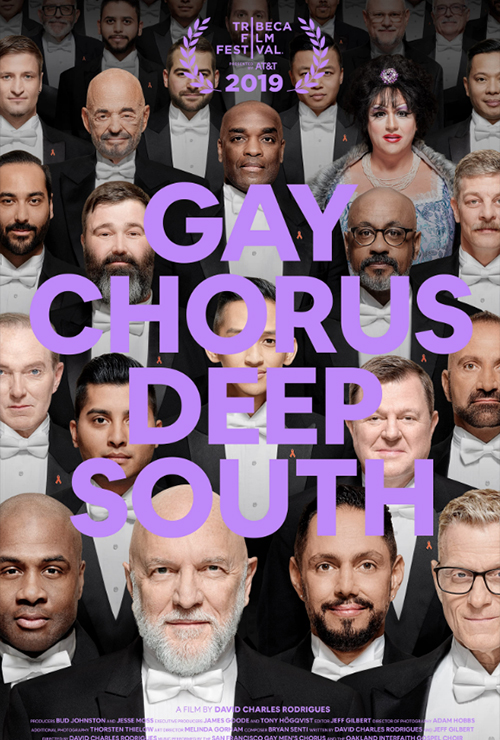
While their history is in many ways defined by setbacks the queer community has faced in the past five decades, SFGMC is anything but bitter or resigned. A recent public letter from Artistic Director Jacob Stensberg in honor of Pride begins, “Pride, like hope, should never be silent. We all have a voice: when we raise them together in harmony, love will always win.” Today, the chorus continues to focus on advocacy, education, and joy, through their concerts; through their benefit efforts; through the numerous educational resources on their website, which include articles on how to “come out” and understanding pronouns (as well as inspiring videos with LGBTQ+ celebs and allies, such as our upcoming performer Kristin Chenoweth!); and their active youth program, RHYTHM, for which chorus members visit local schools to deliver a message of acceptance and to combat isolation and bullying.
We at Cal performances are delighted to have the opportunity to be part of their holiday concert series, which has been a beloved hallmark of their programming since the group’s founding! As we anticipate this performance celebrating the LGBTQ+ community, we also want to take a moment to reflect on what it means to be a supporter, an ally, and an effective community member during Pride month and beyond.
Said Stensberg, “June is our annual reminder of the importance of taking pride in ourselves and the progress we’ve made. It is also a time when we—both LGBTQ people and allies—recommit to the causes and communities who continue to suffer under an unjust society.”
We invite you to learn more about SFGMC and their incredible mission, as well as to look at their resources, at sfgmc.org.
WATCH: Clips of the San Francisco Gay Men’s Chorus Performing
Related Posts
There are no related posts yet. Check back soon!
Summer Cinema: Get Ready for Our 23–24 Season with These Exciting Films!
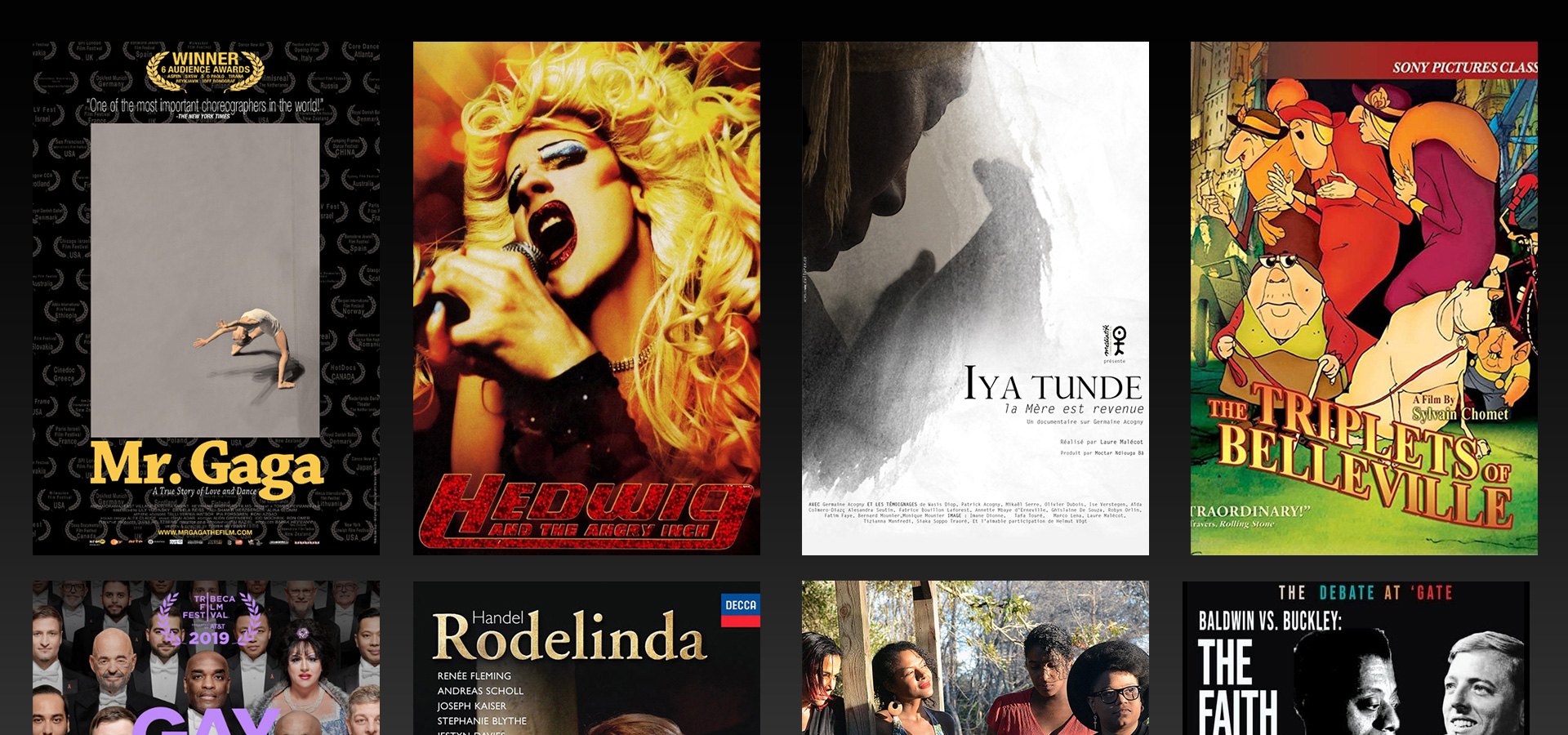
Summer Cinema: Get Ready for Our 23–24 Season with These Exciting Films!
Doom scrolling through Netflix to find movies to watch this summer? We’ve got you covered.
By Krista Thomas, Cal Performances’ Associate Director of Communications
While Cal Performances’ events pause over summer as we switch over to a new season, you can still stay engaged and get a taste for all the upcoming season has to offer with a number of exciting films and documentaries providing context for our 23–24 artists and programs. Below, we’ve compiled a long list of related movies and pulled out eight standouts for your viewing pleasure. As a bonus, we’ve also included a few major motion pictures that feature music you likely never knew was performed by some of our most beloved artists! (Need an excuse to rewatch Star Wars or Avengers? We’ve got you covered!)
Let us know if there are any must-sees we missed, and happy viewing!
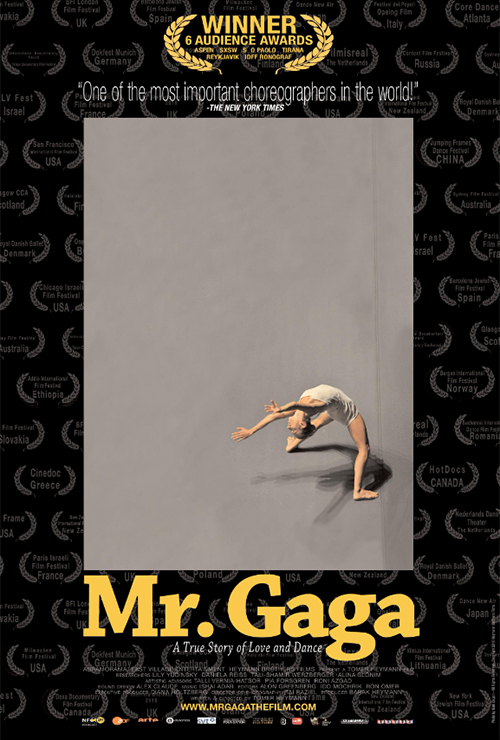
Movie: Mr. Gaga: A True Story of Love and Dance
Related Performance: Batsheva Dance Company, MOMO
Ohad Naharin, the current house choreographer and former longtime artistic director of Batsheva Dance Company, has made a profound impression on both the company and the landscape of modern dance. Naharin has even created his own movement language, “Gaga,” which all Batsheva dancers practice daily. In this film, created over the course of eight years, “director Tomer Heymann mixes intimate rehearsal footage with an extensive unseen archive and breathtaking dance sequences” to paint a picture of a modern day dance titan, marked by “great artistic integrity and extraordinary vision.” This film will provide context for his new work MOMO, which makes its Bay Area premiere at Cal Performances in March 2024.
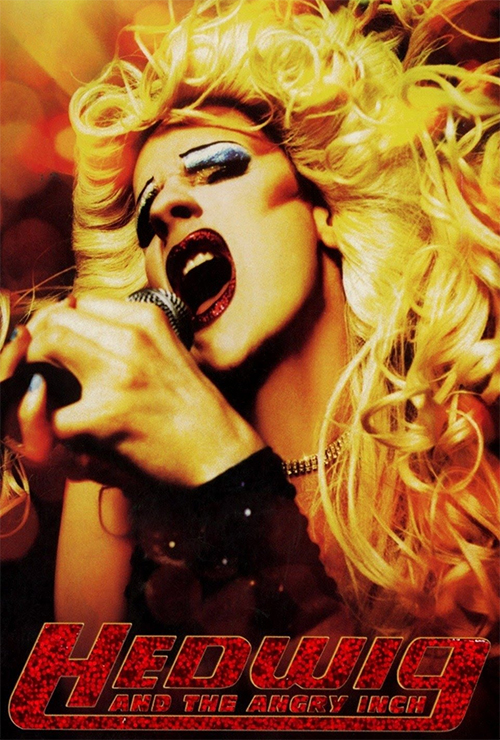
Movie: Hedwig and the Angry Inch
Related Performance: John Cameron Mitchell and Amber Martin in Cassette Roulette
Songs and scenes from this dramatic musical comedy have a high probability of gracing the stages of John Cameron Mitchell and Amber Martin’s Cassette Roulette at Cal Performances this November. With Mitchell serving as writer, director, and lead actor, the film follows Hedwig, an East Berlin-born genderqueer musician who moves to the West to be with an American G.I. Years later, Hedwig is touring with her band around the United States, sharing her music as well as glimpses into the chaotic twists and turns of her life through multiple concerts at Bilgewater Inn seafood restaurants. During the tour, Hedwig is forced to juggle the presence of another touring musician, the ultra successful rockstar Tommy Gnosis, a man Hedwig once loved who broke her heart and stole her songs.
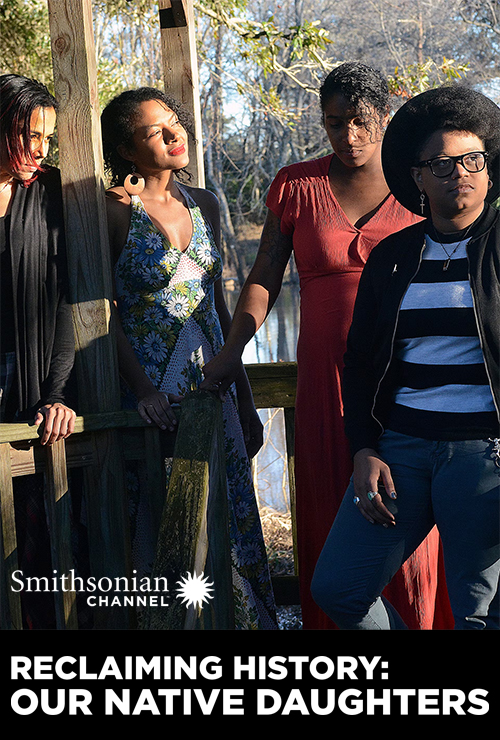
Movie: Reclaiming History: Our Native Daughters
Related Performance: American Railroad, Silkroad Ensemble with Rhiannon Giddens
In November 2023, multi-instrumentalist Rhiannon Giddens returns to Cal Performances with Silkroad Ensemble for American Railroad, a work that examines the history of the US’s expansion west through the music of underrecognized communities. Though American Railroad is a newer work for Giddens, her interest in examining history through the lens of culture goes much farther back. In this documentary developed by the Smithsonian Channel, we follow Giddens and three other black female banjo players—Amythyst Kiah, Leyla McCalla, and Allison Russell—on their journey to create and perform a deeply personal folk album offering a new perspective on Black women’s history and the often overlooked roots of American music. “From a secluded Louisiana bayou recording studio to electrifying concerts around the country, witness four incredible musicians on an extraordinary creative journey.”

Movie: Gay Chorus, Deep South
Related Performance: San Francisco Gay Men’s Chorus, Holiday Spectacular
The San Francisco Gay Men’s Choir was founded on political activism and resilience, having formed in response to the assassination of Mayor George Moscone and Supervisor Harvey Milk, the first openly gay man elected to public office in California. This 2019 documentary follows the chorus along with the Oakland Interfaith Gospel Choir on a tour through the American Deep South, conceived in the wake of anti-LGBTQ legislation and rhetoric flooding the region. Through a series of difficult and often uncomfortable conversations, deep personal reflection on both sides, and, of course, song, the film offers “a glimpse of a less divided America, where the things that divide us… are set aside by the soaring power of music, humanity and a little drag.”
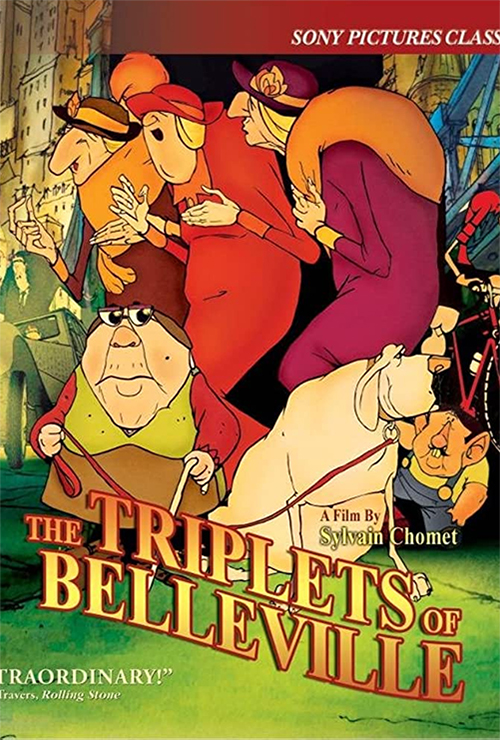
Movie: The Triplets of Belleville
Related Performance: The Triplets of Belleville Cine-Concert
The charming animated French feature film The Triplets of Belleville swept the globe when it was released in movie theaters in 2003, raking up dozens of awards and nominations and attracting a cult following among film buffs. Through music and images (and almost no dialogue), writer-director Sylvain Chomet tells a story of a caper involving American gangsters, Tour de France cyclists, and a trio of colorful vaudevillian sisters out to expose a crime ring. In October, the piece will visit Cal Performances with composer Benoît Charest and his eight-piece orchestra, who will perform a live version of Charest’s Oscar-nominated score, evoking the streets of 1920s Paris and “Le Jazz Hot” and featuring fun live sound effects to accompany the film.

Movie: Debate: Baldwin vs. Buckley
Related Performance: Baldwin and Buckley at Cambridge, Elevator Repair Service
At the height of the Civil Rights Movement in 1965, the progressive queer Black writer and activist James Baldwin met the “Father of American Conservatism” William F. Buckley, Jr., onstage at the Cambridge University Union to debate the resolution “The American Dream is at the Expense of the American Negro.” This documentary showcases and provides valuable context for the very debate that will be dramatized on Cal Performances stages next March by Elevator Repair Service, a New York troupe that specializes in adaptations of literary and historic texts.
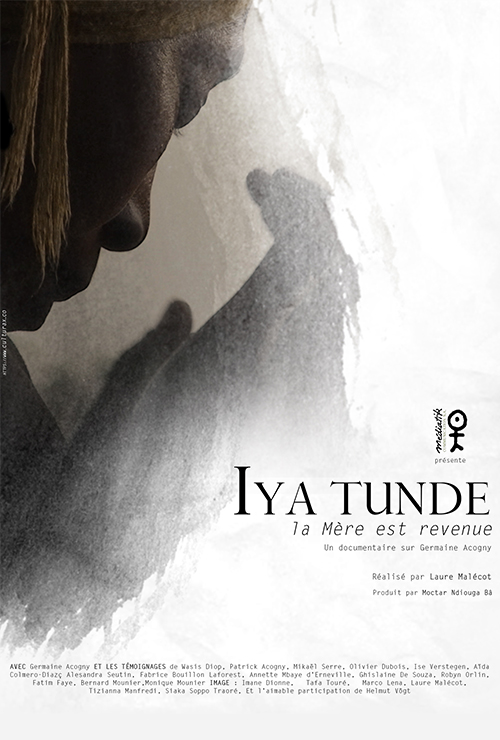
Movie: Iya Tundé, The Mother Came Back
In February 2024, Germaine Acogny visits Cal Performances to dance common ground[s], a duet co-created and co-performed with Malou Airaudo. Now in her 70s, Acogny’s pioneering work helping to spread African dance internationally has earned her the title “mother of African contemporary dance.” This documentary focuses on “the legacy of Acogny’s dance practice, fusing West African and contemporary dance,” and the dance school she founded that now serves as a meeting point for dancers throughout Africa to facilitate training in and exchange of various styles of African dance. The film also explores challenges she has faced as a Black woman in her field as well as the ways she has used movement and nature as a catalyst of growth.
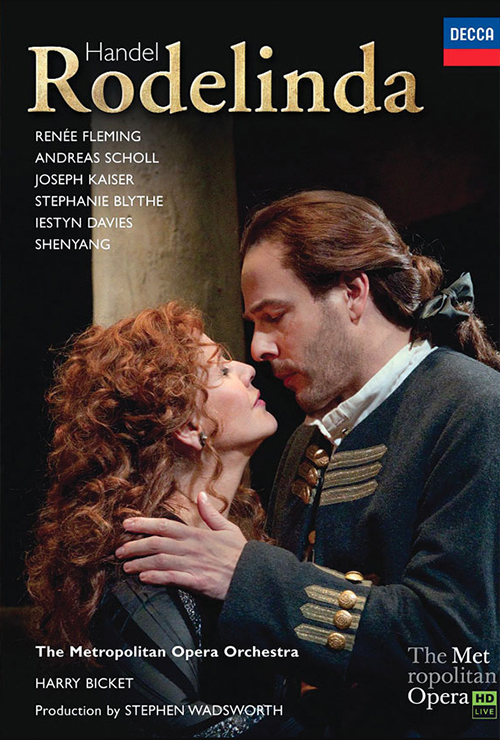
Movie: Handel: Rodelinda, starring Renée Fleming
Related Performance (1): The English Concert, Handel’s Rodelinda
Related Performance (2): Renée Fleming, soprano
This recording from 2012 provides a glimpse into two performances on our 2023–24 season, highlighting both the vocal abilities of soprano Renée Fleming, who will give a Cal Performances recital February 2024, and the interpretive mastery of conductor Harry Bicket in Handel’s Rodelinda, which he will guide The English Concert in at Cal Performances in November 2023. Rodelinda is a story of enduring marital love that remains steadfast through every adversity. Starring here in the title role, Fleming delivers beloved arias “Ombre, piante” and “Ho perduto il caro sposo” as she mourns the loss of her exiled husband Bertarido, and must navigate her new potions at the mercy of the lustful and vicious usurper Grimoaldo.
Even More for Your Consideration
- Pina. A true dance showcase, this Oscar-nominated film features a number of longtime Pina Bausch dancers, including a soloist on our upcoming program, Malou Airaudo, plus archival footage from the choreographer herself. (Related Performance: Pina Bausch’s The Rite of Spring and Germaine Acogny and Malou Airaudo’s common ground[s], co-produced by the Pina Bausch Foundation, École des Sables, and Sadler’s Wells)
- Tous les matins du monde. This French romance/drama that follows a grand master of the viola da gamba was once credited by viol virtuoso Jordi Savall as having ignited a revival of interest in viola da gamba. The Baroque soundtrack, which features Savall, is said by IMDb to have outsold Michael Jackson upon its release in France, and outsold Madonna upon its release in the United States. (Related Performance: Jordi Savall and Hespèrion XXI)
- Being John Malkovich. Multiple Academy Award nominee John Malkovich has starred in seemingly countless films, perhaps most iconic of which is this dramatic comedy in which a puppeteer played by John Cusack finds a portal into movie star John Malkovich’s brain. (Related Performance: John Malkovich in The Infernal Comedy: Confessions of a Serial Killer)
- Ailey. This recent documentary tells the story of choreographer Alin Ailey’s life through dance as well as archival footage of Ailey himself. (Related Performance: Alvin Ailey American Dance Theater)
- Don Giovanni. This TV movie version of the Mozart opera features tenor Mark Padmore as Don Ottavio. (Related Performance: Mark Padmore, tenor; Mitsuko Uchida, piano)
- Rebels on Pointe. This 2017 documentary traces the all male drag ballet company Les Ballets Trockadero de Monte Carlo through their founding following the Stonewall Riots of 1969 to modern day. (Related Performance: Les Ballets Trockadero de Monte Carlo)
- Ballerina Boys. In 2021, a new documentary on The Trocks both contextualizes the group and follows them as they tour through North and South Carolina and are faced with the region’s struggles over LGBTQ rights. (Related Performance: Les Ballets Trockadero de Monte Carlo)
- Hairspray Live! Winner of Emmy and Tony Awards for both her singing and acting, Kristin Chenoweth is has an extensive roster of films, though Hairspray Live! is one of the few onscreen in which you’ll hear her sing as well! (Related Performance: Kristin Chenoweth, For the Girls)
- Anna Karenina. The 2012 movie featuring Kiera Knightly and Jude Law takes up the same Tolstoy story as does the Joffrey Ballet’s first full-length narrative ballet. (Related Performance: The Joffrey Ballet, Anna Karenina)
- Thrive and Matthew Whitaker: About Tomorrow. Categorized as short documentaries, both films follow the life of the young, blind jazz pianist Matthew Whitaker, whose talent for piano was apparent at age 3. The first documentary was released in 2015 about Whitaker at age 12, and the second was released in 2022 and features Whitaker ahead of his 21st birthday. (Related Performance: Matthew Whitaker)
- Free to Dance, The three-part PBS documentary on the impact of Black choreographers and dancers in America features Urban Bush Women’s founder and a source of inspiration for Hair & Other Stories, Jawole Willa Jo Zollar, as well as Alvin Ailey. (Related Performance 1: Urban Bush Women, Hair & Other Stories; Related Performance 2: Alvin Ailey American Dance Theater)
- Singular. This documentary discusses the career of Grammy-winning jazz singer Cécile McLorin Salvant through interviews with the artist, her peers, her family members, and others who’ve influenced her life. (Related Performance: Cécile McLorin Salvant)
- Joffrey: Mavericks of American Dance. Released in 2012, this documentary traces The Joffrey Ballet from their roots in 1956, “touring the United States in a borrowed station wagon,” to their modern place of international renown among ballet and modern dance companies. (Related Performance: The Joffrey Ballet, Anna Karenina)
Honorable Mention: Soundtracks
- While Space Cowboys, Eyes Wide Shut, and other movies feature Brad Mehldau on the soundtrack, he also “acts” as a pianist in Mona Lisa Smile! (Related Performance 1: Brad Mehldau Trio; Related Performance 2: Brad Mehldau, 14 Reveries)
- The Last Jedi, I Am Legend, and Click are among many soundtracks Los Angeles Master Chorale has performed on. (Related Performance: Los Angeles Master Chorale, Music to Accompany a Departure)
- Cyrano and Darkest Hour feature piano by pianist Víkingur Ólafsson. (Related Performance: Víkingur Ólafsson, piano, J.S. Bach’s Goldberg Variations)
- The Woman King’s most iconic song, “Keep Rising,” features Angélique Kidjo. (Related Performance: Angélique Kidjo)
- The Avengers and The Lobster are among some of the movie soundtracks featuring the Takács Quartet. (Related Performance: Takács Quartet)
- The Fountain and Requiem for a Dream are among soundtracks featuring Kronos Quartet. (Related Performance: Kronos Quartet, Five Decades)
- Tous les matins du monde. See description in section above.
Honorable Mention: Coming Soon!
- A 24-Decade History of Popular Music. A film of Taylor Mac’s award-winning performance will make its debut at the Tribeca Film Festival this June (and shortly thereafter be available on HBO streaming platforms), alongside a documentary about Bark of Millions collaborator, costumer Machine Dazzle. (Related Performance: Taylor Mac & Matt Ray’s Bark of Millions: A Parade Trance Extravaganza for the Living Library of the Deviant Theme)
- Ogresse. Grammy-winning jazz singer Cécile McLorin Salvant will turn her renowned musical project into an animated film. The irreverent fairytale “explores self-love and beauty ideals with a brave, complex, sometimes cruel and always endearing heroine.” (Related Performance: Cécile McLorin Salvant)
- The Art of Fugue Explored. Sponsored by the Borletti-Buitoni Trust, paint Filippo Gorini embarks on a journey into Bach’s final work. (Related Performance: Filippo Gorini, piano)
Please note that these movies were compiled based on our own survey of what currently exists and is easily viewable, and does not include many wonderful films and documentaries that are only accessible via film festivals, or any that we may have inadvertently missed. If there are any movies you don’t see listed here related to your 2023–24 season that you recommend we include, please write to us at info@calperformances.org.
Additionally, please note that these movies have been created independently of Cal Performances and do not necessarily reflect the views and opinions of the organization.
Related Posts
There are no related posts yet. Check back soon!
A Fond Farewell to the 2022–23 Season
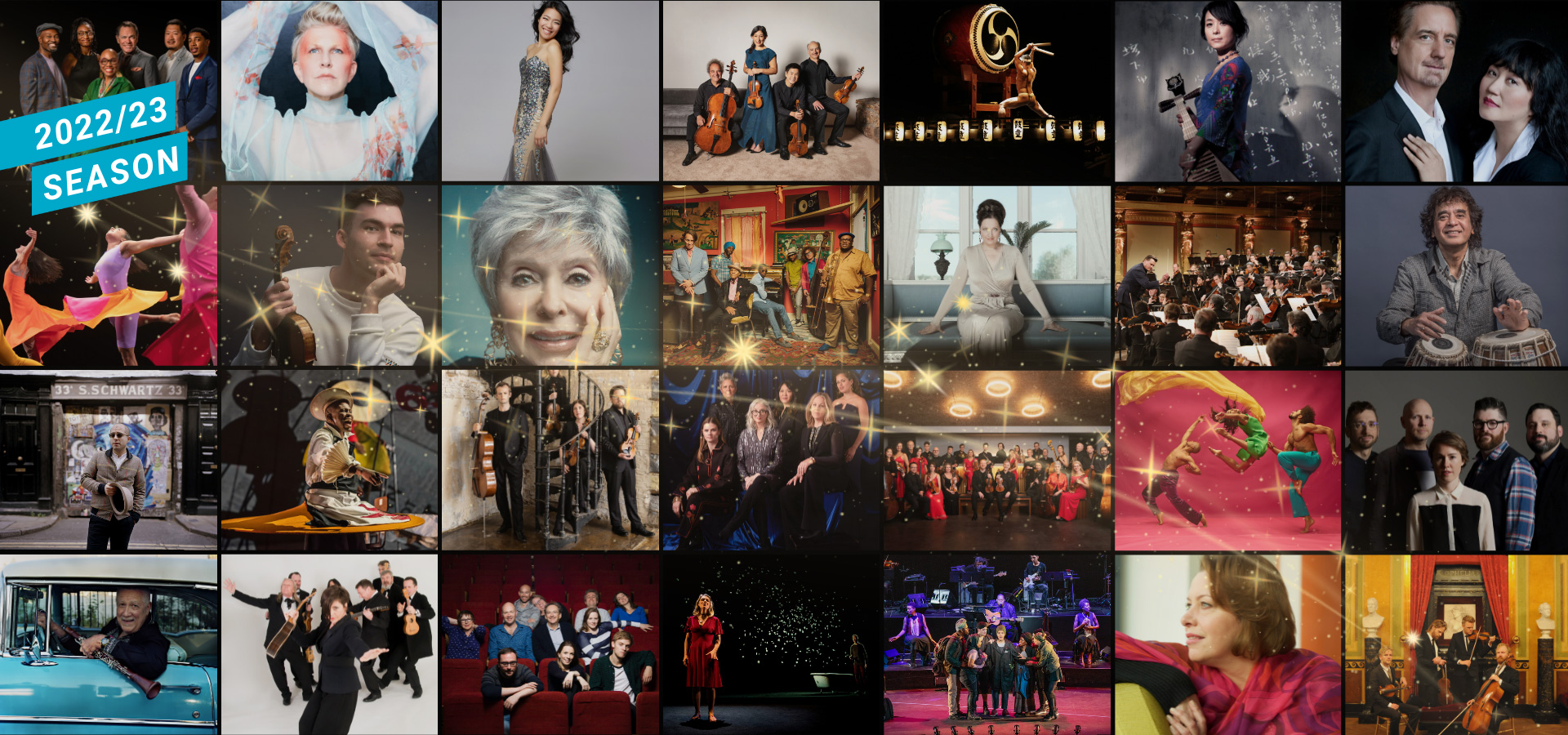
A Fond Farewell to the 2022–23 Season
“In brief: Thank you!”
Video by Tiffany Valvo, Cal Performances’ Social Media and Digital Content Specialist
The Cal Performances 2022–23 season opened all the way back in September 2022 with Miami City Ballet performing Balanchine’s dazzling creation Jewels and ended a week ago with our final performance, a recital by the singular soprano Nina Stemme and pianist Magnus Svensson. Over the course of this season, highlights have included a UC Berkeley campus-wide residency with William Kentridge and the US premiere of his work SIBYL; a thoughtful look at “Human and Machine” through our robust Illuminations programming, which culminated last month in our interactive Human & Machine Song Contest; more than 20 premieres across many genres; expanded opportunities that engaged UC Berkeley students; and so much more! Before we fully turn the page to our highly anticipated 2023–24 season, we wanted to shine a light on some of the memorable moments for both our audiences and our artists from the past year. Thank you to all who made this season as special as it was!
Related Posts
Human & Machine Song Contest Winners
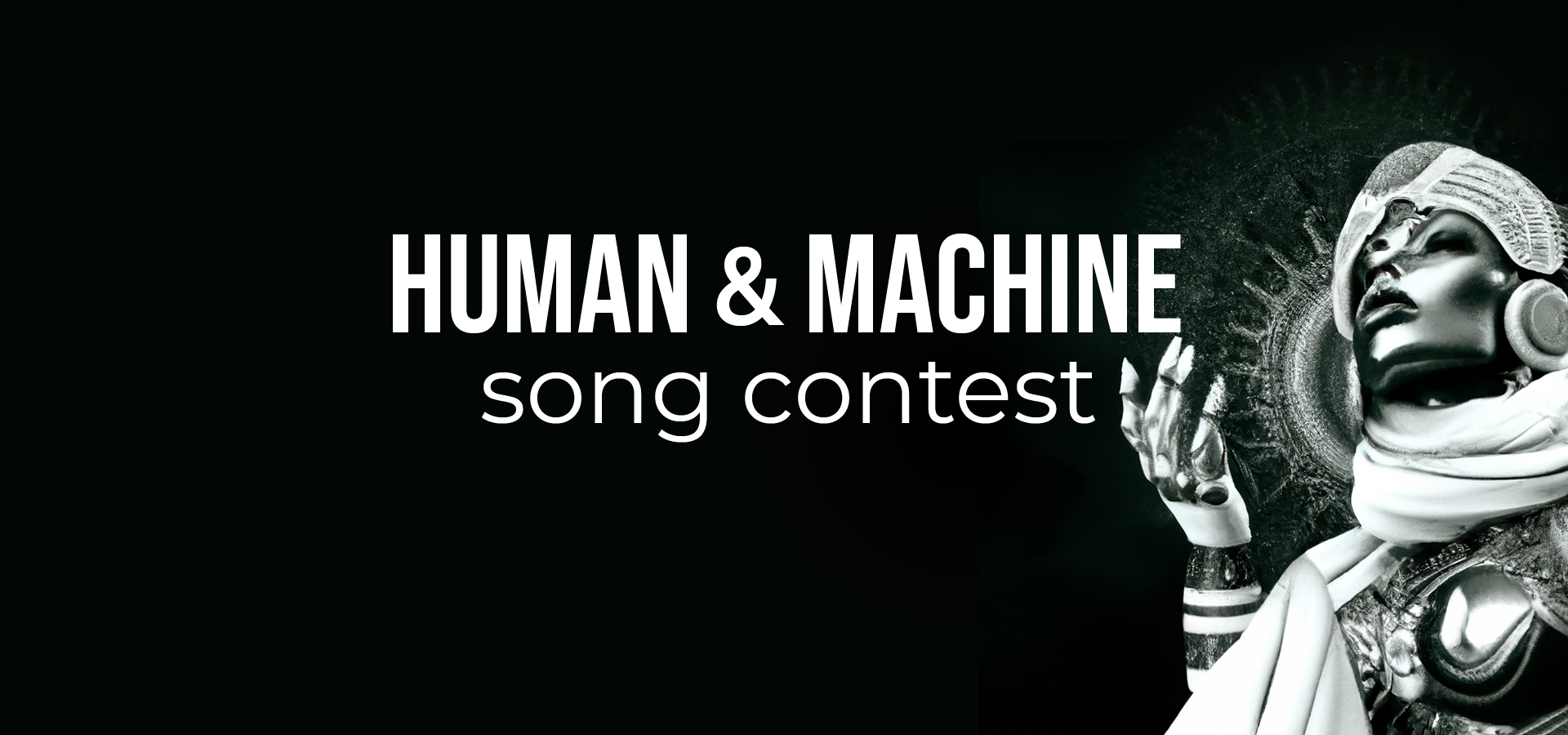
Human & Machine Song Contest Winners
Exploring the Boundaries of Humanity’s Creative Collaboration with Technology
By Krista Thomas, Cal Performances’ Associate Director of Communications
On Saturday, April 22, Cal Performances announced the winners of its spring 2023 Human & Machine Song Contest. Designed to explore the boundaries of humanity’s creative collaboration with technology (as part of Cal Performances’ 2022–23 Illuminations “Human & Machine” programing), the contest invited individuals to submit their own songs or compositions that involved AI or other technologies in the creation process. The 20 submissions underwent a public vote as well as feedback from an esteemed panel of judges, which resulted in five distinct awards.
Below are the winners of the song contest and their submissions.
Most Popular Song: “She could be everything” by Pascale&Lingye
Of the 215 public votes on the song contest, more than 20% went to “She could be everything,” winning it the title “Most Popular Song.” Judge Mark Simos praised the piece as particularly “intuitive,” noting that, “When you’re writing a song, sometimes you write a single line of lyric and then you kind of sink into this meditation about that line; and when I heard that piece, I felt as if we were being taken inside the mind of a songwriter dwelling on what happens in your interior space as you hear that one line and work with it.”
The creators, who self-describe as “music buddies and future band mates,” aimed to “explore the concept of time in songwriting and challenge harmonic and rhythmic conventions, then create unique and innovative music that pushes the boundaries of what is traditionally expected in popular music.” Using a number of tools, including ChatGPT, the two relied on technologies to create lyrics, then slice and pitch shift various melodies from their own musical samples.
Ultimately, they reported that the process led them to the belief that the true soul of music and creativity lies in humans, but that technology is a valuable tool for generating new ideas and enhancing humans’ creative vision.
Best Composition: “The AI’s Lament: Technological Apocalypse” by Dzwonczyk/Muntz
“The AI’s Lament” was recognized by the panel of judges as having a distinct compositional form and narrative structure, though these were unlike the form of a typical human-generated song. The piece was created by Luke Dzwonczyk, who is currently pursuing an MA/PhD at Berkeley, having previously received BAs in both Music and Computer Science; and composer and multi-instrumentalist Mat Muntz, who is also a student at UC Berkeley, working on a PhD in Music Composition. For their part, the songwriters aimed intentionally to toy with the uncanny valley and based their concept around a “techno-dystopian apocalyptic future.” The speech-synthesizer and AI-generated text were used to “create a scene of The Machine speaking to us itself, warning of the consequences of humanity’s technological hubris.”
This work stood out not only for its composition, but also for its creative instrumentation. Muntz played Croatian bagpipes to feed as data inputs into the AI, which ended up producing a futuristic sound paradoxically rooted in an old musical and ethnic tradition.
Listen to “The AI’s Lament: Technological Apocalypse”
Best Lyrics: “Stars of Berkeley” by Ryan Huber
When Huber embarked on this project, he wanted first and foremost to produce a song that would excite Berkeley audiences. Huber believes in the power of human-technology collaboration and wanted to use his music to highlight this method of creation as a “valid new artistic pursuit.”
His upbeat pop lyrics, which focus on “the unique personalities that UC Berkeley attracts and nurtures,” were praised by the judge Mark Simos as “the most successful collaboration between human and AI I’ve heard in terms of the lyrics.” Full of “quirky unexpected responses, campiness, unabashed cliches, and irony,” “Stars of Berkeley” brought a lightheartedness and sense of humor to the competition that truly stood out.
Huber is a UC Berkeley staff member in the department of Theater, Dance, and Performance Studies, and was glad for the opportunity to work with new tools in the creative process. He used AI for each element of the song and spent significant time refining the lyrics AI produced, giving it feedback to make its responses more ironic and entertaining. The accompanying video draws heavily on the idea of students at Berkeley and was a perfect homage to Cal Day, which happened to coincide with the award ceremony.
Best Live Performance: “The Fairy and the Cowbell” by LiveHuman
“The Fairy and the Cowbell” set itself apart in recognizing AI as “part of a lineage of technological innovations”—in the words of group member DJ Quest, “These ain’t your grandaddy’s records!” LiveHuman originated as a live instrumental/experimental, jazz/hip hop trio in San Francisco. For this project, members DJ Quest, Albert Mathias (percussion), and Andrew Kushin (bass) decided to use the idea of human-technology collaboration to shed light on a longstanding tradition of mixing music, particularly working with vinyls as was popularized during the early rap and hip hop renaissance. The group used DJ software, time-coded vinyl, and other scratching techniques to enhance their own live playing.
On his takeaway, DJ Quest said, “I believe that AI is an amazing tool and I just think that it’ll never share the same joy and pleasure we humans share when creating art. However, it can make the process of creating art more enjoyable… AI can emulate AI, but humans inspire humans.”
Listen to “The Fairy and the Cowbell”
Grand Prize: “Carbon Copy” by Derrick Chan-Sew
The grand prize winner was selected by the jury as the best overall piece exploring the unique interaction of human and technology. For his creation, the UC Berkeley Master of Information Design student fed AI 24 piano scores by Philip Glass and Steve Reich to use as data sets. Both Glass and Reich, Chan-Sew noted, are “early pioneers who bridged music and technology using tape, AI, and other techniques to enhance their music and songwriting.” The composers’ distinct and repeating patterns were particularly apt for this project, the jury noted, as they were easier for AI to understand and work with. The end result does indeed mirror work by the two composers, with a noted use of the minimal classical music techniques of pulse, phasing, and addition/subtraction.
The music was accompanied by a music video that incorporated AI-generated graphics. Chan-Sew ultimately chose from 40 videos he worked with AI to produce, with the final result representing a perfect complement to the music, fully integrated to create a singular art piece.
—–
Learn more about process, techniques, and each song contest submission, including honorable mentions “A.I. Songwriting (It’s a Whole New World)” by The Mighty Peregrines, “Android Damnation” by Biohazard-P, and “Simple Love” by Sturm&Sturm.
WATCH: “Judgment Day” event, which includes the award ceremony as well as a panel on AI and copyright and a lecture on music and AI. Livestreamed on April 22 from Wheeler Auditorium.
Related Posts
2023–24 Season Illuminations: “Individual & Community”
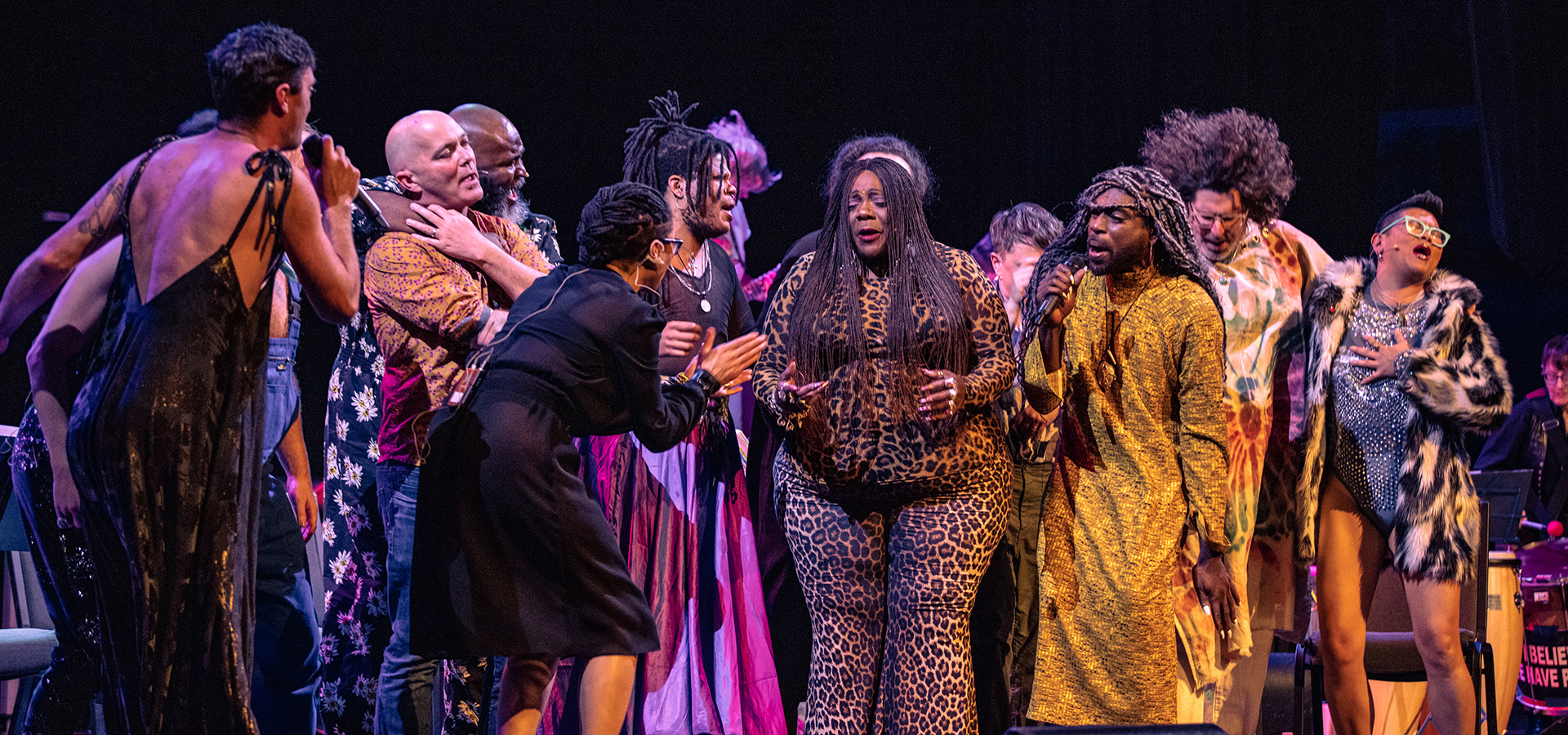
2023–24 Season Illuminations: “Individual & Community”
Bringing the arts and UC Berkeley scholarship together to explore one of the most foundational challenges of our time.
Now in its fourth year, Cal Performances’ Illuminations program continues to connect groundbreaking UC Berkeley scholarship to themes taken up by the world-class music, dance, and theater presented by Cal Performances. This season, Cal Performances will present eight distinct performances as well as public programs created in partnership with campus and community leaders to investigate the tensions that come into play while balancing the interests of the individual with the interest of the group. This video features Cal Performances executive and artistic director Jeremy Geffen; john a. powell, Director of the Othering & Belonging Institute at UC Berkeley; creator Taylor Mac, who will bring this season Taylor Mac & Matt Ray’s Bark of Millions: A Parade Trance Extravaganza for the Living Library of the Deviant Theme; conductor Christopher Rountree, who will lead Wild Up in Julius Eastman’s Femenine; and Mame Diarra Speis and Courtney J. Cook, co-artistic director and associate artistic director of Urban Bush Women, respectively, who speak to the group’s performance of Hair & Other Stories. Each performance—and each artist—offers a unique perspective on this intricate and timely theme. Watch the video to hear more.
Please note that OKAN’s performance was added to our Illuminations season following our season announcement so, while they are not reflected in this video, you can find more about OKAN through this full list of Illuminations: Individual & Community performances.
Transcript
Jeremy Geffen:
Cal Performance’s Illuminations thematic programming explores the intersection between the performing arts and the groundbreaking scholarship that UC Berkeley is known for throughout the world. By investigating how the arts and scholarship connect, we can more holistically understand the most urgent questions of our time. Our 2023–24 Illuminations theme is “Individual & Community.” Through this year’s theme, we aim to explore the inherent tension between our desire to distinguish, delineate, and live life on our own terms, and our need to exist and work together as a collective.
john a. powell:
The concept of individuality and community is constantly in flux, although this sort of real emphasis on individuality is relatively recent, so, you go back three, 400 years, it wasn’t relevant. And so, as the individual emerged, mainly in Western society or initially in Western society, it was always the question of the relationship between the individual and the community. And neither one of them is static, and that’s one of the mistakes that we make. They’re constantly moving.
All of us are part of multiple communities. Some are more important than others. We all carry multiple aspects of our identities, coming from those various communities. And sometimes, we have ideas about both how we express ourselves, but also how other individuals and other communities express themselves, so it’s really multilayered. And music, dance, art is an expression, not just of fun, this is an expression of meaning at sort of a deep spiritual level. But we don’t listen to the same music, we don’t watch the same dance, so anything that brings us together in a positive way is very useful, and to help us reinterpret not just the other community, not just the other individual, but our own community and ourselves.
Jeremy Geffen:
Using the performing arts as our springboard, we’ll investigate the implications of the concepts of individual and community in our lives through public programming in collaboration with campus partners, as well as through seven distinct performances, each offering their own singular perspective.
Taylor Mac:
We call it the Bark of Millions. It’s 54 songs, one song for every year after Stonewall, inspired by a different queer person from world history, and they’re all people that I never would’ve known about in my entire upbringing. And it’s an exploration of the ideas that these people inspire. And then also, I’m making a show about a community, and the audience is part of that community, so I need space for them too. So, there’s a sense of the activism of taking over the big space is important. It’s part of the art of this piece, and we just sing songs, and they’re just really fun.
Chris Rountree:
Femenine is the kind of piece that makes one contemplate the immensity of reality. It is cosmic in nature. It’s so big, and that could take any number of shapes. His pieces are at once totally joyous, post-gospel minimalism, that is truly about ecstasy. They are also pieces about individual agency for artists, where that is the core central aspect of all of the works, in terms of the way that they are on the page is ‘everyone, make choices all the time.’ I’m speaking a lot about the individual with Eastman’s work, and it’s because what we think about first is like what agency we have and how we look at what he wrote for us, metabolize it like it’s like ambrosia nectar, and then breathe out ourselves. So, that’s a huge part of it, but what that does is it builds a community. They’re works that build a community, and that’s really why they’re so special, is they’re something to gather around and share.
Mame Diarra Speis:
Hair & Other Stories is a dance-theater work that uses hair as a frame to really take a deeper dive into conversations around systemic racism.
Courtney J. Cook:
So it’s not just about performing, but also about what kind of conversations, what kind of relationships we’re building with the folks whose stories are reflected in the work.
Mame Diarra Speis:
And so, in order for us to be in a dialogue, that means everyone in the room has to participate. And so essentially, what we were doing was breaking the fourth wall with the audience and saying, “Hey, you are a part of this as well. If I’m examining and if I’m unpacking, then let’s ask these questions of you,” because at the end of the day, we’re trying to lift up everyone’s humanity inside of this work.
Courtney J. Cook:
To do the work on themselves and to do the work with the folks in their community, a sense of the agency to be able to hold that kind of work, and to know that it is possible, and that it’s not a quick fix. And so Hair & Other Stories intentionally bridges both performance and community engagement.




